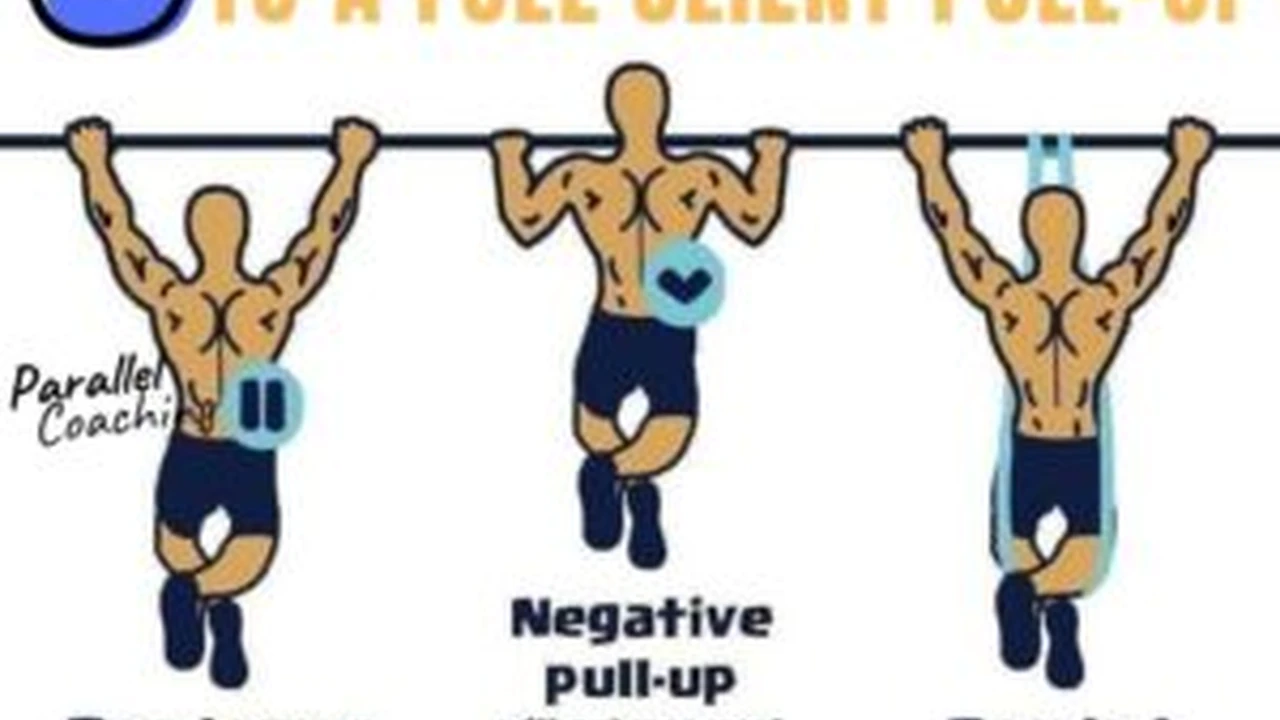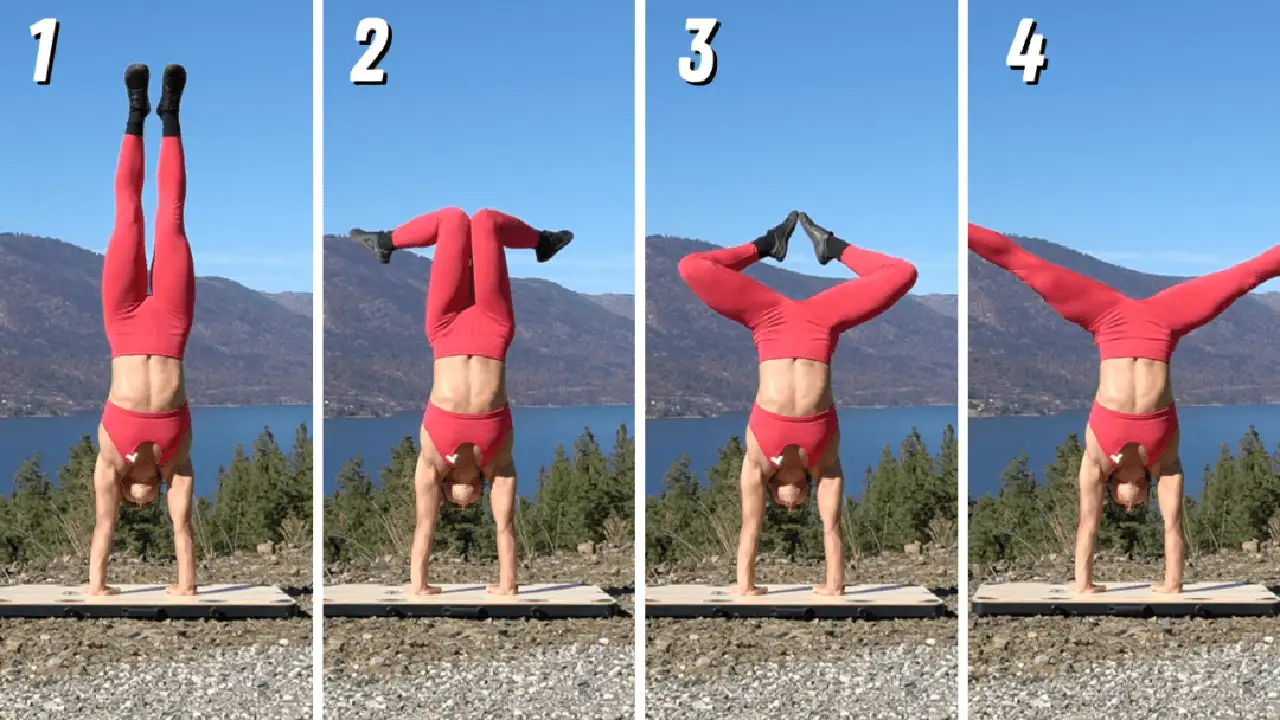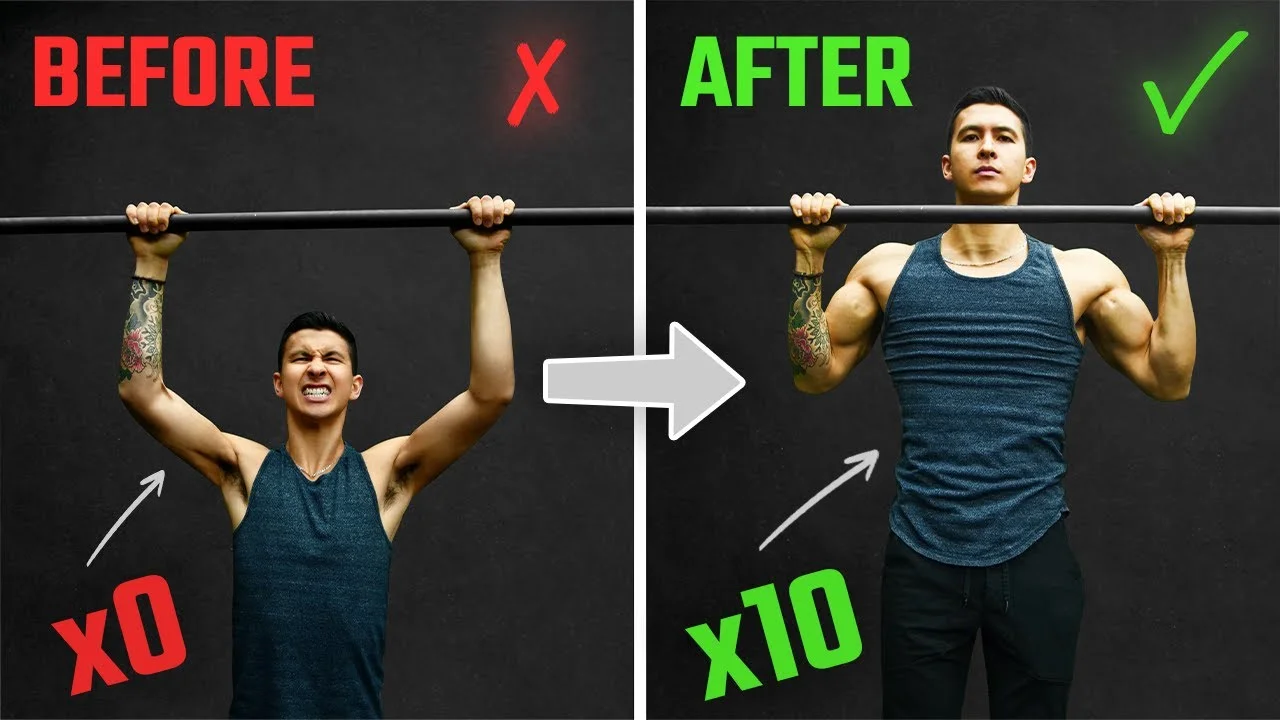Negative Pull-Ups: Build Strength for Full Repetitions
Negative pull-ups are a fantastic way to build the strength needed for full pull-ups, even if you can't do a single one yet. This technique focuses on the eccentric, or lowering, phase of the exercise, which is often easier than the concentric, or pulling-up, phase. We'll explore how negative pull-ups work, the benefits they offer, and how to incorporate them into your workout routine, along with some gear recommendations to enhance your training. Let's get started on your journey to mastering the pull-up!

So, you want to do a pull-up, huh? Maybe you can already crank out a few, or maybe you're staring up at that bar thinking, "No way!" Either way, negative pull-ups are your secret weapon. They're all about controlling the downward motion, which builds serious strength.
Understanding Negative Pull Ups and Muscle Strength
Let's break it down. A pull-up has two main parts: pulling yourself up (the concentric phase) and lowering yourself down (the eccentric phase). Negative pull-ups focus on the eccentric phase. You start at the top of the pull-up position (either by jumping up or using a box), and then you slowly lower yourself down. This controlled descent is what builds the muscle and strength needed to eventually pull yourself all the way up.
Benefits of Negative Pull Ups: A Comprehensive Guide
Why bother with negative pull-ups? Well, for starters, they're accessible. Even if you can't do a full pull-up, you can do a negative pull-up. They also improve your muscle strength and endurance, specifically in your back, shoulders, and arms. Plus, they help you develop the proper form, which is crucial for preventing injuries when you start doing full pull-ups.
Proper Form for Negative Pull Ups: Maximize Results
Form is key! Here's how to do a negative pull-up correctly:
- Get into position: Use a box or jump to grab the pull-up bar with an overhand grip, slightly wider than shoulder-width.
- Start at the top: Your chin should be above the bar.
- Lower slowly: Control your descent, aiming for 3-5 seconds.
- Repeat: Once you're at the bottom, release and repeat.
Make sure to keep your core engaged and your body straight. Avoid swinging or using momentum.
Incorporating Negative Pull Ups into Your Workout Routine: Training Strategies
How often should you do negative pull-ups? Start with 2-3 sets of 3-5 repetitions, 2-3 times per week. As you get stronger, you can increase the number of repetitions or sets. You can also add weight using a weight belt or vest.
Here's a sample workout:
- Warm-up: 5 minutes of light cardio and dynamic stretching.
- Negative Pull-Ups: 3 sets of 5 repetitions.
- Rows: 3 sets of 8-12 repetitions.
- Bicep Curls: 3 sets of 10-15 repetitions.
- Cool-down: 5 minutes of static stretching.
Recommended Pull Up Bars for Home Workouts: Product Reviews and Comparisons
To really get serious about your pull-up journey, you'll want a good pull-up bar. Here are a few recommendations:
Doorway Pull Up Bar: A Budget-Friendly Option
Product: Iron Gym Total Upper Body Workout Bar
Description: This classic doorway pull-up bar is easy to install and doesn't require any drilling. It's perfect for beginners and those on a budget.
Usage Scenario: Home workouts, travel (if you can find a suitable doorway).
Pros: Affordable, easy to install, portable.
Cons: Can damage door frames, limited weight capacity.
Price: Around $30.
Wall Mounted Pull Up Bar: Stability and Durability
Product: Rogue P-4 Pull-Up System
Description: This wall-mounted pull-up bar is built to last. It's made from heavy-duty steel and can handle a lot of weight. It requires drilling for installation.
Usage Scenario: Dedicated home gym, garage gym.
Pros: Very stable, high weight capacity, durable.
Cons: Requires drilling, more expensive.
Price: Around $150.
Power Tower with Pull Up Station: Versatility and Full Body Workout
Product: Weider Power Tower
Description: A power tower offers multiple workout stations, including a pull-up bar, dip bars, and leg raise station. It's a great option for a full-body workout.
Usage Scenario: Home gym, apartment (if you have the space).
Pros: Versatile, multiple workout options.
Cons: Takes up more space, can be less stable than wall-mounted bars.
Price: Around $200.
Pull Up Bar Comparison: Choosing the Right Equipment
When choosing a pull-up bar, consider your budget, space, and fitness goals. A doorway pull-up bar is a good starting point for beginners. A wall-mounted pull-up bar is a more durable and stable option for serious lifters. A power tower provides the most versatility.
Using Resistance Bands to Enhance Negative Pull Ups: Assisted Training
If you're struggling with negative pull-ups, resistance bands can help. Loop a resistance band around the pull-up bar and place your foot or knee in the loop. This will provide assistance during the lowering phase, allowing you to focus on proper form and control.
Progressing Beyond Negative Pull Ups: Achieving Full Repetitions
Once you can comfortably perform 8-10 negative pull-ups with good form, you're ready to start working on full pull-ups. You can continue using resistance bands for assistance, or you can try jumping into the top position and slowly lowering yourself down, then try to pull yourself up a little bit at the bottom. Keep practicing, and you'll be doing full pull-ups in no time!
Common Mistakes to Avoid During Negative Pull Ups: Injury Prevention Tips
Here are a few common mistakes to avoid:
- Swinging: Keep your body straight and controlled.
- Rushing: Lower yourself slowly and deliberately.
- Not engaging your core: Keep your core tight throughout the exercise.
- Using too much momentum: Start from a dead stop.
:max_bytes(150000):strip_icc()/277019-baked-pork-chops-with-cream-of-mushroom-soup-DDMFS-beauty-4x3-BG-7505-5762b731cf30447d9cbbbbbf387beafa.jpg)






